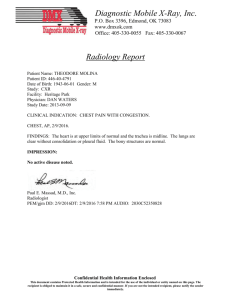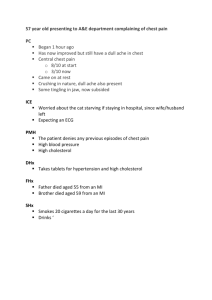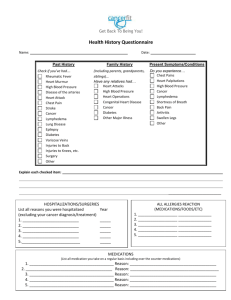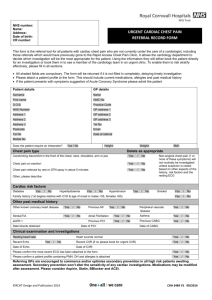Chest Pain, Noncardiac
advertisement
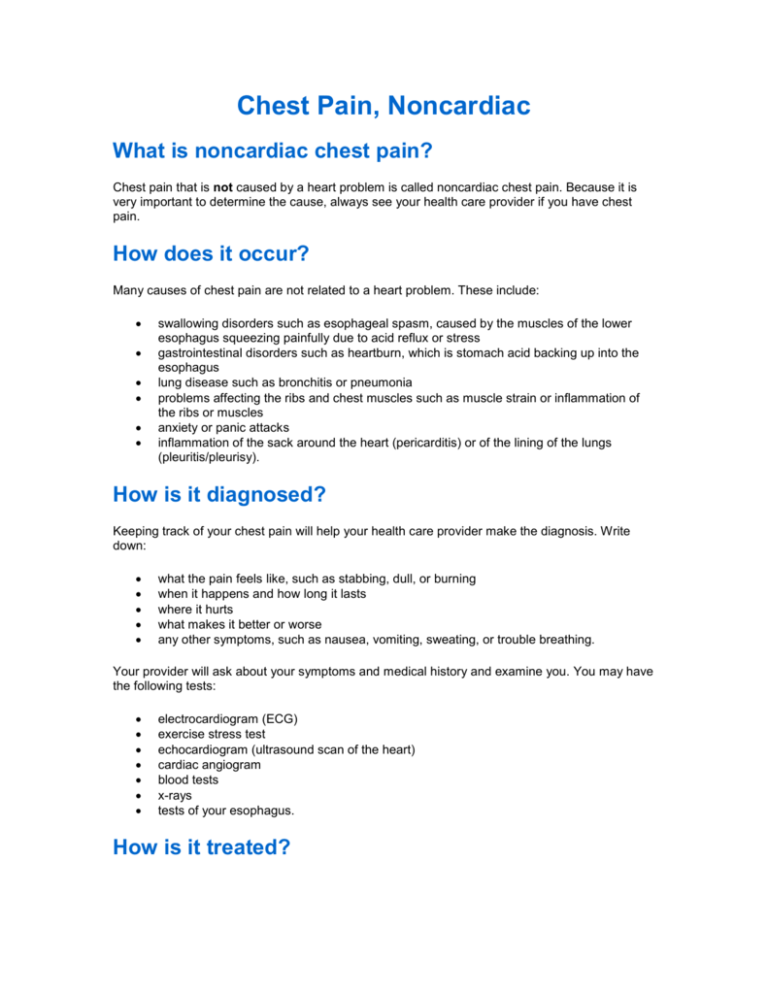
Chest Pain, Noncardiac What is noncardiac chest pain? Chest pain that is not caused by a heart problem is called noncardiac chest pain. Because it is very important to determine the cause, always see your health care provider if you have chest pain. How does it occur? Many causes of chest pain are not related to a heart problem. These include: swallowing disorders such as esophageal spasm, caused by the muscles of the lower esophagus squeezing painfully due to acid reflux or stress gastrointestinal disorders such as heartburn, which is stomach acid backing up into the esophagus lung disease such as bronchitis or pneumonia problems affecting the ribs and chest muscles such as muscle strain or inflammation of the ribs or muscles anxiety or panic attacks inflammation of the sack around the heart (pericarditis) or of the lining of the lungs (pleuritis/pleurisy). How is it diagnosed? Keeping track of your chest pain will help your health care provider make the diagnosis. Write down: what the pain feels like, such as stabbing, dull, or burning when it happens and how long it lasts where it hurts what makes it better or worse any other symptoms, such as nausea, vomiting, sweating, or trouble breathing. Your provider will ask about your symptoms and medical history and examine you. You may have the following tests: electrocardiogram (ECG) exercise stress test echocardiogram (ultrasound scan of the heart) cardiac angiogram blood tests x-rays tests of your esophagus. How is it treated? After your provider has confirmed that the chest pain is not caused by a heart problem, he or she will recommend treatment for the problem that is causing the pain. When should I call my health care provider? Tell your provider if your noncardiac chest pain is getting worse while you are using the treatment your provider recommends. You may need a different medicine or change in dosage, a different treatment, or more tests. If you have new or different chest pain, call your health care provider or 911, or go to a hospital emergency room right away if: You have chest discomfort (pressure, fullness, squeezing, or pain) in the center of your chest that lasts more than 10 minutes or goes away and comes back. You have chest pain with lightheadedness, nausea, or a cold sweat. You also have pain or discomfort in one or both arms, the back, neck, jaw, or stomach. You have trouble breathing during the chest pain. If you live in an area where there is no 911 or ambulance service, have someone drive you to the closest emergency room right away. You can also call the closest law enforcement agency (police, sheriff, or highway patrol) to help drive you to the emergency room.



